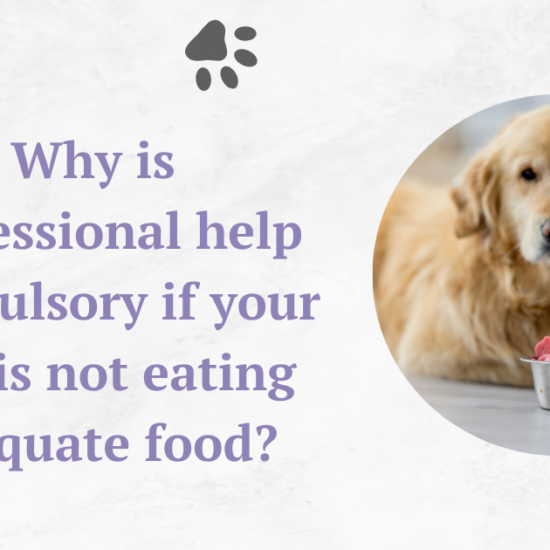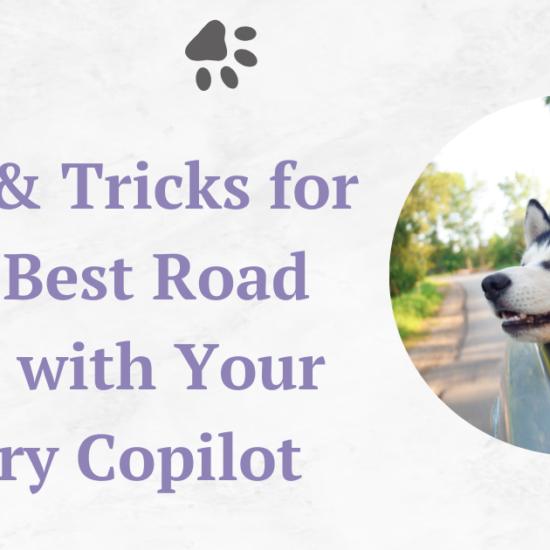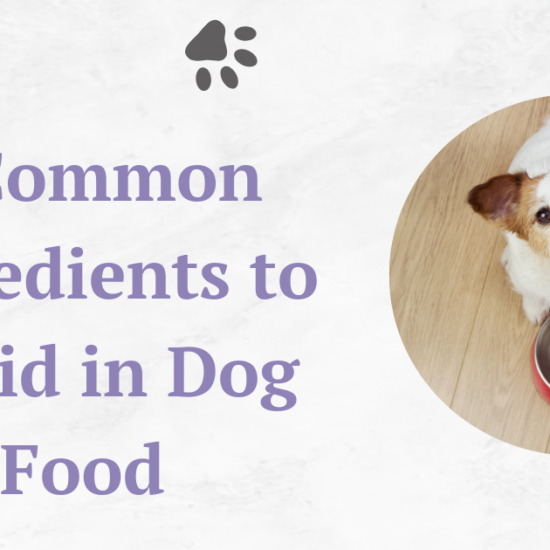The dog adoption process is a wonderful opportunity to find a loyal and loving companion while making a positive impact on an animal’s life. Before embarking on this journey, it’s crucial to familiarize yourself with the steps to adopting a dog.
Table of Contents
Introduction
This knowledge will equip you with the necessary information to make an informed decision and prepare for the responsibilities that come with pet ownership.

Steps to Adopting a Dog
To simplify the process, let’s break down the steps involved in adopting a dog:
Do Your Research

Whenever the question arises of “What is the dog adoption process”, we often neglect that research is a crucial initial step in the dog adoption process. It allows you to gather information about different dog breeds, their temperaments, exercise needs, and grooming requirements. By understanding the traits and characteristics of various breeds, you can identify the one that aligns best with your lifestyle and preferences.
Consider factors such as the dog’s size, energy levels, compatibility with kids or other pets, and living space requirements. This research will enable you to make an educated decision, ensuring a harmonious relationship between you and your future four-legged companion.
Choose a Shelter or Rescue Group

Once you have a clear idea of the type of dog you want, the second step is to find a reputable animal shelter or rescue group. These organizations provide a haven for animals in need and facilitate the process of adopting a dog.
Take the time to research shelters and rescue groups in your area. Look for organizations with positive reputations, ethical practices, and certifications from recognized animal care associations. It’s also important to consider their specialization, as some shelters may focus on specific types of dogs or have breed restrictions.
Visiting the shelters in person allows you to evaluate the cleanliness, overall well-being of the animals, and the staff’s commitment to their care. You must ask them what the dog adoption process is, their fees, and any additional requirements they may have.
Visit the Shelter
During your shelter visit, you’ll have the opportunity to interact with the dogs available for adoption. Observe their behavior and interactions with the staff and other animals. Engage in play and bonding activities to assess their compatibility with you and your family.
While visiting the shelter, ask any questions you may have regarding the dog’s background, health, and care requirements. The staff will provide valuable insights to help you make an informed decision.
Complete the Adoption Form

If you find a dog that steals your heart, most shelters will require you to fill out an adoption application as a part of the dog adoption process. This form collects essential information about you and your ability to provide a suitable home for the dog.
Honesty and accuracy are crucial when completing the adoption application. Be prepared to answer questions about your past experiences with pets, your living situation, and your preferences for the type of dog you wish to adopt. Some shelters may conduct home visits to ensure your environment is safe and suitable for a dog then they will continue the procedure to adopt a pet.
After submitting the adoption application, the shelter will review your information and conduct any necessary background checks. Once approved, the shelter will guide you through the finalization process, which may include signing an adoption agreement and paying adoption fees.
Adopting a dog is a life-changing experience that brings immeasurable joy and love. By following the dog adoption process and understanding the steps you can make this a memorable process for you.
Fees and Agreements Process

Let’s explore the procedure to adopt a pet and shed light on the fees and agreements involved.
One crucial aspect of pet adoption is the adoption fee. Different shelters may have varying fees, which can be influenced by factors such as the dog’s age, breed, and overall health. It’s important to remember that the adoption fee is just one part of the total cost of owning a dog.
The fees you pay serve multiple purposes. Firstly, they contribute to covering the expenses associated with the dog’s medical care. These may include vaccinations, spaying or neutering, microchipping, and any other necessary procedures the dog may have undergone while under the shelter’s care. Secondly, the fees support the shelter’s operational costs and enable them to continue providing care for other animals in need.
Aside from the adoption fee, you will also be required to sign an adoption agreement or contract in the procedure to adopt a pet. This agreement outlines your responsibilities as a dog owner and ensures that you provide the necessary care for your new furry friend. The agreement may include provisions that prohibit any actions that could harm or endanger the dog. It’s essential to carefully read and understand the adoption agreement before finalizing the dog adoption process. If you have any questions or concerns, don’t hesitate to ask the shelter staff for clarification.
By accepting the fees and abiding by the adoption agreement, you demonstrate your readiness and commitment to providing a loving home for a dog in need. Remember that the adoption process is not just a transaction but a heartfelt decision to bring a new companion into your life.
Physical Exam And Vaccinations
Once you have gone through the process of adopting a dog and completed the necessary paperwork, the next step is to ensure the health and well-being of your newly adopted pet. Reputable organizations prioritize the health of their animals and perform a thorough physical examination as well as administer necessary vaccinations before allowing a dog to be adopted.
This is a crucial step in the process of adopting a dog. During the physical exam, a veterinarian from the shelter will assess the overall health of the dog and look for any signs of illness or injury. This examination involves checking vital signs, conducting tests if needed, and evaluating the dog’s general well-being. If any health issues are identified, the shelter will inform you and guide how to address them.
Vaccinations play a crucial role in protecting your dog’s health. Shelters ensure that the dogs are up-to-date on essential vaccinations, including core vaccines that safeguard against diseases like rabies, distemper, and parvovirus. By ensuring that your adopted dog receives these vaccinations, you not only protect their health but also contribute to preventing the spread of easily transmissible diseases.
Once you adopt a dog, the shelter should provide you with a health certificate or proof of vaccination. It is essential to keep these documents safe and provide copies to your veterinarian for future reference. These records will help you stay on top of your dog’s vaccination schedule and ensure they receive the necessary care going forward even after the dog adoption process.
By prioritizing a comprehensive health checkup and necessary vaccinations for your adopted dog, you give them a healthy start in their new home. Regular veterinary care and preventive measures will be vital in maintaining their well-being and ensuring they lead a happy and fulfilling life.
Spaying And Neutering Procedure
Another important aspect of responsible pet ownership is spaying or neutering your dog. These procedures are typically performed by veterinarians and offer several benefits for your dog’s health and population control.
Many animal shelters require that dogs be spayed or neutered before they can go forward with the dog adoption process. This policy aims to prevent unwanted litter and reduce the number of stray animals in the future. Spaying involves the surgical removal of a female dog’s reproductive organs, while neutering involves the surgical removal of a male dog’s testicles.
If the shelter has not already spayed or neutered the dog, they may schedule an appointment for the procedure before going forward with the procedure to adopt a pet. In some cases, they may provide a referral to a trusted veterinarian who can perform the surgery at a later date.
There are several health benefits associated with spaying or neutering your dog. These procedures can reduce the risk of certain cancers and behavior problems. It’s important to follow through with the spaying or neutering of your dog as recommended by the shelter or your veterinarian.
Your veterinarian will provide instructions on how to care for your dog before and after the surgery. The procedures are typically safe and routine, and by spaying or neutering your dog, you demonstrate responsible pet ownership and contribute to the overall health and well-being of animals.
By ensuring that your adopted dog is spayed or neutered, you control pet overpopulation, reduce health risks, and prevent behavior problems associated with intact animals.
Get your House Ready For a Dog
Now that you’ve gone through the process of adopting a dog and taken care of the necessary procedures, it’s time to prepare your house to welcome your new furry friend. Creating a safe and comfortable environment is crucial for your dog’s well-being and adjustment. Here are some important considerations when getting your house ready for your adopted dog:
- Set up a designated area: Create a specific space in your home where your dog can have its bed, food and water bowls, toys, and a crate or kennel if needed. This area will give your dog a sense of belonging and a safe place to retreat when they need privacy or rest.
- Remove potential dangers: This is a very important one of all the steps to adopting a dog. Conduct a thorough inspection of your home to identify and eliminate any potential hazards. Secure electrical cords, remove toxic plants, store household chemicals and medications out of reach, and ensure small objects that could be a choking hazard are stored safely. These precautions will help keep your dog safe and prevent accidents.
- Make your home pet-friendly: Dogs are naturally curious and may explore their surroundings. Make your home pet-friendly by securing cabinets, blocking access to hazardous areas like the garage or laundry room, and using safety gates or barriers as necessary. Properly secure windows and stairs to prevent accidents.
- Stock up on supplies: Before bringing your new dog home, make sure you have all the necessary supplies. These may include dog food, treats, toys, grooming tools, a collar or harness with identification tags, a leash, bedding, and any other items specific to your dog’s breed or size. Having these supplies readily available will make the transition smoother for both you and your new companion.
- Establish a routine: Dogs thrive on routine and predictability. Establish a daily schedule for feeding, exercise, playtime, and bathroom breaks. Consistency and predictability will help your dog acclimate to their new home and provide them with a sense of stability and security.
By taking the time to prepare your house ahead of your dog’s arrival, you create a safe and welcoming environment. This will facilitate a smooth transition and help your dog feel secure, relaxed, and loved in their new surroundings.
Transition and Adjustment Period
Bringing a new dog into your home is an exciting time, but it also requires patience and understanding as both you and your new companion adjust to each other. The process of adopting a dog is just the beginning of a lifelong journey. Here are some tips to facilitate a smooth transition and ensure a positive adjustment for your newly adopted dog:
- Give them time and space: Your dog will need time to become familiar with their new surroundings. Start by confining them to a small area of your home and gradually allowing them access to other rooms over time. This gradual introduction prevents overwhelming your dog with too much space at once. Provide a designated quiet and comfortable area where they can retreat when they need a break or some alone time.
- Establish a routine: Dogs thrive on routine, so establish a consistent daily schedule for feeding, exercise, playtime, and rest. A predictable routine will help your dog feel secure and provide them with a sense of what to expect. Be patient and understanding as they adjust to the new schedule, as it may take some time for them to settle in.
- Use positive reinforcement: Positive reinforcement techniques, such as treats, praise, and affection, are effective tools for training and building a bond with your dog. Use these techniques to encourage and reward desired behaviors. Reinforce good behavior and gently redirect or correct inappropriate behavior. Building a trusting relationship based on love, patience, and consistency will help your dog feel safe and cared for.
- Introduce family members and other pets gradually: If you have other family members or pets, introduce them to your new dog slowly and in a controlled manner. Observe their interactions and guide them if needed. Allow your dog to get accustomed to new people and animals at their own pace and comfort level.
- Watch for signs of discomfort or anxiety: It’s normal for a newly adopted dog to feel a bit nervous or anxious during the adjustment period. However, if you notice persistent signs of distress or unusual behavior, consult with a veterinarian or animal behaviorist for guidance and support.
Remember, the transition and adjustment period can vary for each dog. Some may adapt quickly, while others may take more time. With patience, understanding, and consistent care, your new dog will gradually acclimate to their new home and become a cherished member of your family.
Ongoing Care and Training Procedure
Adopting a dog is a lifelong commitment that requires continuous care and attention. Here are some important considerations for caring for and training your adopted dog:
- Provide a healthy diet: Consult with your veterinarian to determine the best diet for your dog based on their age, breed, and health. Feed them high-quality dog food that meets their nutritional needs. Ensure they have access to fresh water at all times.
- Exercise and mental stimulation: Dogs need regular exercise to stay physically and mentally healthy. Provide daily exercise through walks, playtime, and interactive toys. Mental stimulation is also important, so engage your dog in training sessions and interactive games.
Note: There might be affiliate links mentioned here. We may receive a commission if you purchase a product through an affiliate link. There is no additional charge for you. Please do your own research before making any online purchases.
- Grooming and hygiene: Regular grooming is essential to keep your dog clean and healthy. Brush their coat regularly, trim their nails, and clean their ears. Bathe them when necessary, using dog-friendly products.
- Veterinary care: Schedule regular check-ups with your veterinarian to ensure your dog’s overall health. Stay up to date with vaccinations, flea and tick prevention, and heartworm medication. Discuss any concerns or changes in behavior with your veterinarian.
- Training and socialization: Training is crucial for your dog’s well-being and the development of a strong bond between you. Teach them basic commands, and house manners, and socialize them with other dogs and people. Consider enrolling them in obedience classes for structured training.
Remember, patience, consistency, and positive reinforcement are key when training your dog. Be kind, and understanding, and reward good behavior.
By providing ongoing care, training, and love, you can ensure a happy and fulfilling life for your adopted dog. Enjoy the journey of pet parenthood and cherish the special bond you share with your furry friend.
FAQs
How do I pick a dog that fits my lifestyle?
To choose the right dog for your lifestyle, you need to think about things like the dog’s size, breed characteristics, energy level, and whether or not it gets along with kids or other pets. Think about where you live, how active you are, and what you like to do to figure out what kind of dog will work best for you.
How do I find a reputable dog shelter or rescue group?
Do some research on shelters and rescue groups in your area that specialize in dogs. Look for organizations that have a good reputation, act responsibly, and are affiliated with animal care groups. Visit the shelters in person to assess the facilities, interact with the staff, and observe how the dogs are being cared for.
When I go to the dog shelter, what should I look for?
While you’re there, observe how the dogs behave and interact with each other. Look for signs of friendliness, compatibility with humans, and any signs of fear or aggression. Spend time with the dogs you are interested in and observe their responses and comfort levels. Inquire about their background, any health issues, and the specific care they require.
What is the dog adoption process?
At most shelters, you will need to complete an application to adopt a dog. The application typically asks about your experience as a dog owner, your living situation, and your preferences. Some organizations may even conduct a home visit to ensure that the dog will be placed in a suitable environment.
What are the costs and requirements for dog adoption?
The cost of adopting a dog varies depending on factors such as its age, breed, and medical condition. These fees typically cover the cost of veterinary care and help support the shelter’s operations. Adoption agreements outline your responsibilities as a dog owner, including providing proper care and committing to its well-being.
What do I need to know about health check-ups and vaccinations?
Before adoption, reputable organizations conduct thorough health check-ups on dogs and administer necessary vaccinations. These health checks ensure that the dog is in good health, while vaccinations protect them from common diseases. Request a health certificate or vaccination records for your new dog, and keep these records for future reference.
Why is it important to have your dog spayed or neutered?
Having your dog spayed or neutered is crucial for population control and their overall health. Many organizations require that the dogs they adopt out are spayed or neutered. These procedures can reduce the risk of certain cancers and behavioral problems. Follow the shelter’s instructions or consult a veterinarian to understand the process.
How can I prepare my house for a new dog?
Set up a designated area with blankets, food, water bowls, and toys for your new dog. Remove any potential hazards and ensure your home is pet-proofed. Stock up on necessary supplies and establish a schedule for feeding, exercise, and playtime to provide structure and familiarity for your new dog.
How can I help my new dog adjust to its new home and surroundings?
Give your new dog time and space to acclimate to its new home. Establish a routine, use positive reinforcement, and gradually introduce them to other family members and pets. Observe their behavior and consult professionals if needed for guidance and support.
Conclusion
Adopting a dog is a thoughtful and rewarding process that requires careful consideration, research, and commitment. By selecting the right dog, choosing a reputable shelter or rescue group, and following the adoption process diligently, you can find the perfect canine companion. Conducting thorough research, visiting shelters, completing the adoption application, and paying the adoption fees, as well as adhering to adoption agreements, are essential steps to ensure responsible and informed adoption.












